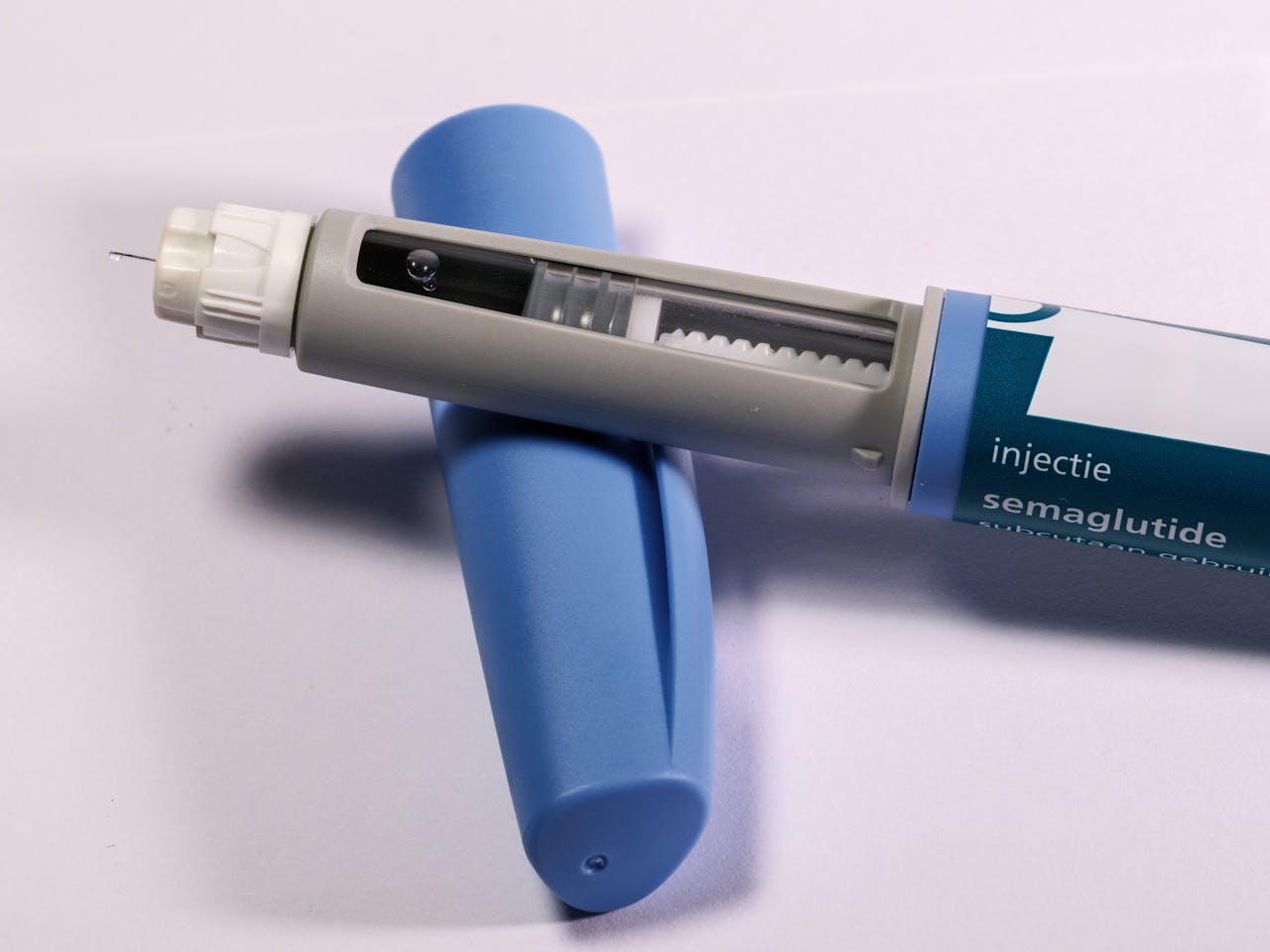Microdosing GLP-1 medications represents a shift from treating disease to preventing it. Instead of waiting for diabetes or obesity to develop, then hitting them with high doses, this approach uses smaller amounts of GLP-1 receptor agonists to support metabolic health before problems start.
What is Microdosing GLP-1? They are taking doses lower than the recommended therapeutic amount – typically around 10% of a standard macro dose. While traditional semaglutide or Tirzepatide therapy might start at 2.5 mg weekly for weight loss, microdosing protocols often begin at 1.5-2 mg weekly. Some patients find that they need even less, taking injections twice a month instead of weekly.
The science behind this approach centers on GLP-1’s role beyond blood sugar control. GLP-1 receptors exist throughout your body – in your brain, gut, immune system, and cardiovascular tissue. When activated, they influence inflammatory pathways, mitochondrial function, and cellular repair mechanisms that impact the aging process.
The Inflammation Connection
Chronic inflammation drives most age-related diseases. Cardiovascular disease, neurodegeneration, and arthritis – they all have inflammatory components. GLP-1 medications reduce key inflammatory markers like C-reactive protein and interleukin-6, even at lower doses.
This matters because inflammation isn’t just about joint pain or autoimmune conditions. Low-grade systemic inflammation accelerates cellular aging. Your mitochondria produce more reactive oxygen species. DNA repair mechanisms slow down. Telomeres shorten faster. By addressing inflammation early with microdosing, you’re potentially slowing these fundamental aging processes.
Research shows GLP-1 receptor agonists can modulate these inflammatory pathways without the gastrointestinal distress that higher doses often cause. Patients report maintaining the anti-inflammatory benefits while avoiding the nausea, vomiting, and digestive issues that make standard doses difficult to tolerate.
Brain Health and Cognitive Protection
GLP-1 receptors in your brain influence mood, cognition, and neuroprotection. Early studies suggest that activating these receptors may reduce neuroinflammation – a key factor in Alzheimer’s and Parkinson’s diseases.
The brain benefits happen through multiple mechanisms. GLP-1 improves insulin sensitivity in brain tissue. It promotes the growth of new neurons. It helps clear toxic protein aggregates that accumulate with age. These effects occur at doses lower than those needed for significant weight loss.
Some patients using microdosed protocols report improved mental clarity and mood stability. While anecdotal, these reports align with what we know about GLP-1’s effects on brain function. The medication crosses the blood-brain barrier and directly influences neural pathways involved in cognition and emotional regulation.
Metabolic Health Beyond Weight Loss
Standard GLP-1 therapy focuses on dramatic weight reduction for obesity treatment. Microdosing takes a different approach – optimizing metabolic function for long-term health rather than rapid weight loss.
This means improved insulin sensitivity, even in people without diabetes. Better glucose control in those with prediabetes or metabolic syndrome. Enhanced fat oxidation and improved lipid profiles. These changes happen gradually but sustainably.
The metabolic benefits extend to cellular energy production. GLP-1 receptor activation improves mitochondrial function and reduces oxidative stress. Your cells become more efficient at producing energy while generating fewer harmful byproducts. This cellular-level improvement translates to better energy levels, improved exercise capacity, and enhanced recovery.
Cardiovascular Protection
GLP-1 medications provide cardiovascular benefits independent of weight loss. They reduce blood pressure, improve endothelial function, and decrease arterial stiffness. These effects occur through direct actions on blood vessels and heart tissue, not just through weight reduction.
Microdosing protocols maintain these cardiovascular benefits while minimizing the rapid body composition changes that can sometimes stress the cardiovascular system. The gradual, sustained improvements in metabolic health create a foundation for long-term cardiovascular protection.
Practical Implementation
Most microdosing protocols start with individualized dosing based on patient response rather than following standard escalation schedules. A physician might begin with 1.5mg of Tirzepatide weekly for women or 1.8-2 mg for men, then adjust based on tolerance and metabolic markers.
The injection technique remains the same – subcutaneous injection using the same syringes and rotation sites as standard therapy. The difference lies in precise measurement. Microdosing requires careful attention to syringe markings since small measurement errors can significantly affect the dose.
Monitoring becomes more nuanced with microdosing. Rather than tracking rapid weight loss, practitioners monitor inflammatory markers, metabolic panels, and patient-reported outcomes like energy levels and mood. Some patients maintain stable weight while experiencing improvements in body composition and metabolic health markers.
The Maintenance Advantage
One significant advantage of microdosing involves long-term maintenance. Patients who start with lower doses often find they can maintain benefits with minimal dose adjustments over time. Some transition to twice-monthly injections or even lower frequencies while maintaining metabolic improvements.
This contrasts with higher-dose protocols, where patients sometimes need continuous dose escalation to maintain effects. The gentler approach of microdosing may create more sustainable long-term results for metabolic health optimization.
Quality and Safety Considerations
The effectiveness and safety of any microdosing protocol depend heavily on product quality and medical supervision. Compounded medications vary in purity, potency, and consistency between pharmacies. Some patients attempt to create their own microdoses by diluting standard preparations, introducing contamination risks.
Working with established providers ensures several critical safeguards. AgelessRx has positioned itself as a leader in longevity telehealth solutions, focusing specifically on research and development of microdosing GLP-1 products for health optimization. Their approach combines pharmaceutical-grade compounded medications with ongoing medical monitoring and dose adjustment protocols.
The medical oversight component proves essential because microdosing requires more nuanced monitoring than standard protocols. Blood work tracking inflammatory markers, metabolic panels, and hormone levels helps optimize dosing for individual patients. This level of medical supervision helps ensure both safety and effectiveness while minimizing the trial-and-error approach that can occur with self-directed protocols.
Looking Forward
Microdosing GLP-1 represents part of a larger movement toward precision medicine and preventive healthcare. Instead of using one-size-fits-all dosing for disease treatment, this approach tailors intervention to individual metabolic needs and health goals.
The growing body of real-world experience suggests that lower doses can provide meaningful health benefits for people who don’t have severe obesity or diabetes but want to optimize their metabolic health for longevity. As our understanding of GLP-1’s broader physiological effects expands, microdosing protocols will likely become more refined and evidence-based.
The key lies in recognizing that optimal health exists on a spectrum. You don’t need to wait for the disease to develop before addressing metabolic function. Microdosing GLP-1 offers a way to support the biological processes that influence how you age, potentially extending both lifespan and healthspan through targeted metabolic optimization.



![women [longevity live]](https://longevitylive.com/wp-content/uploads/2020/01/photo-of-women-walking-down-the-street-1116984-100x100.jpg)










